Excerpts from Jim Conrad's
Naturalist Newsletter
from the May 15, 2016 Newsletter issued from Hacienda Chichen Resort beside Chichén Itzá Ruins; limestone bedrock; elevation ~39m (~128ft), N20.675°, W88.569°; central Yucatán state, MÉXICO
SCARLET SPIDERLING
The day after the Erect Spiderling, Boerhavia erecta, was identified, while accompanying visitors to historic San Bernardino Convent in Valladolid about 45 minutes east of the Hacienda, at the base of a weathered, hardly legible historical marker, the sprawling weed showed up seen below:
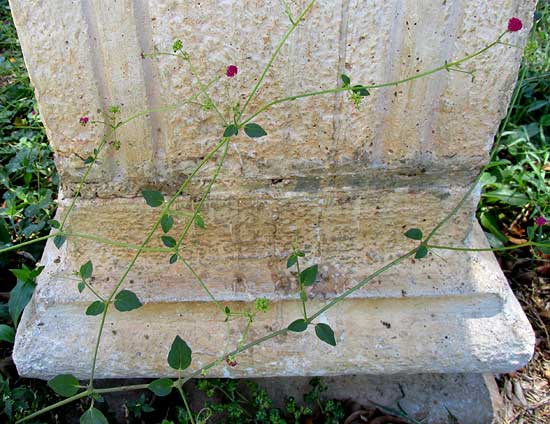
Its vegetative parts were similar to those of the Erect Spiderling, though its flowers were bright red, not white. The herb's basal leaves are shown below:
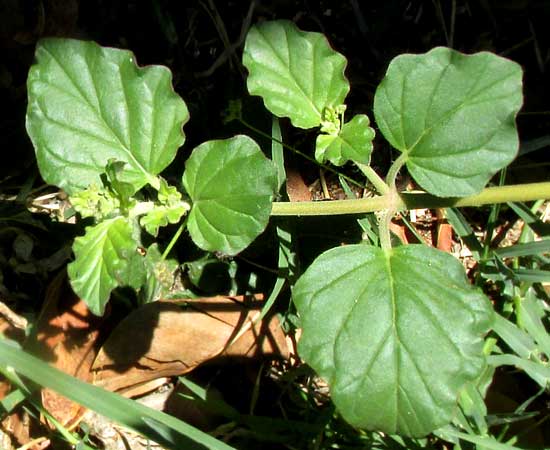
Moreover, despite being red instead of white, up close the blossoms also were very similar to those of the Erect Spiderling, as shown below:
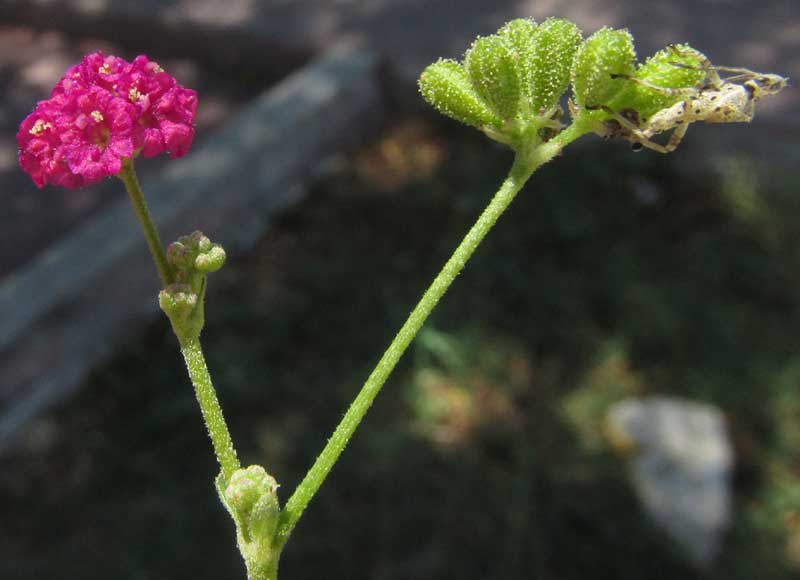
A close-up of just the flowers shows even more structural similarities, is shown below:
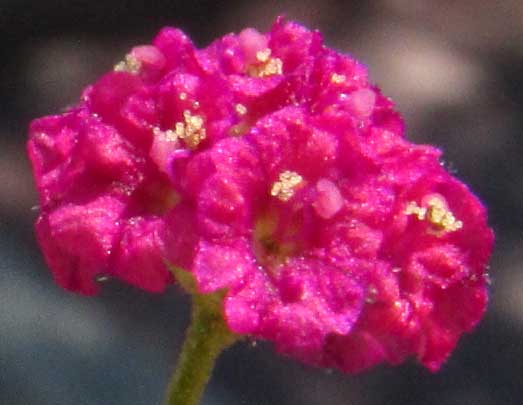
However, unlike the Erect Spiderling, the herb's achene-type fruits bore hairs tipped with glands and were shaped a bit different, as seen below:
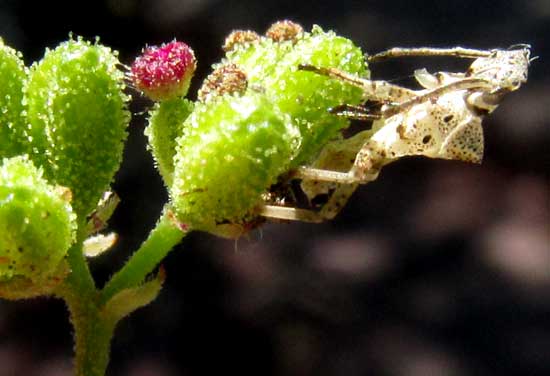
Besides the interesting, unidentified bug at the picture's right, notice the reddish, immature perianth forming atop the inferior ovary -- exactly as with the Erect Spiderling.
So, at this point one wants to ask whether in the Yucatan we have another Boerhavia species, one with scarlet flowers.
We have several Boerhavia species here, and one is named BOERHAVIA COCCINEA, "coccinea" meaning "scarlet." That's what our historical-marker plant is, sometimes known as the Scarlet Spiderling. It's native to the arid southwestern US and much of Mexico, plus it's invading new territory in various parts of the world, in some places being declared a noxious weed.